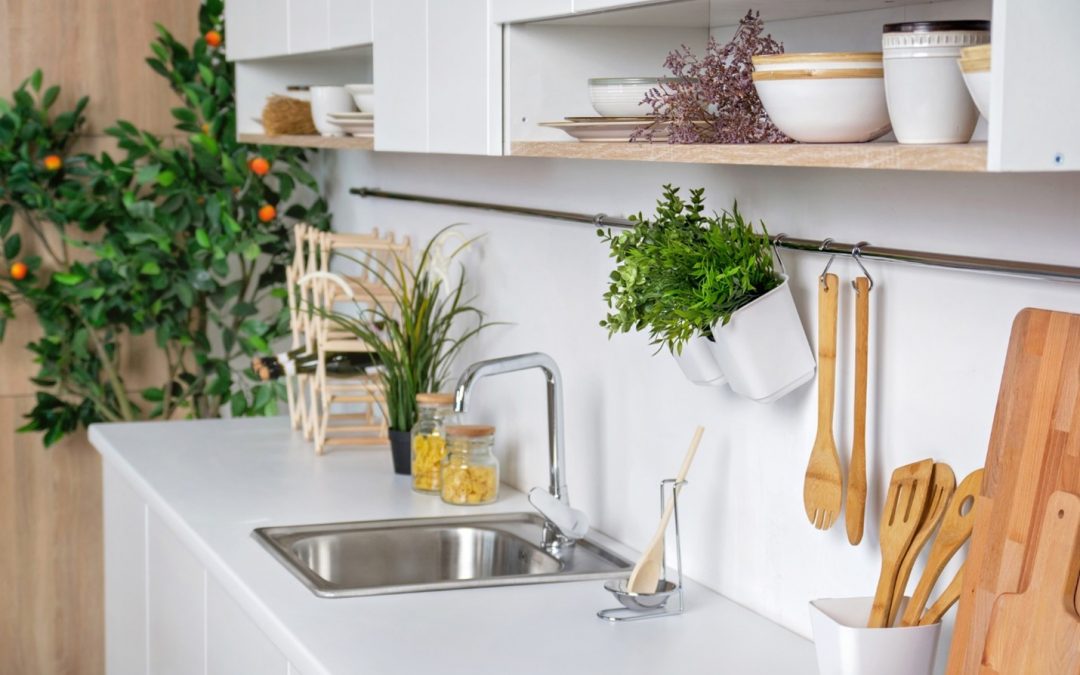Different kinds of sinks can cater to various needs, and you might be a cook who needs ample space for washing the dishes, cleaning the veggies, or doing food prep. Deeper sinks can be ideal when you want to hide dirty cutlery and dishes, but you can also easily get tired in the back area, especially if you can’t easily reach the bottom.
In the past, the depths of the bowls were shallow and only averaged around six inches or less. Nowadays, you have the option to double that size and repurpose it so you can get something that you need. Here are some tips to help you make a decision.
1. Shallow Options: When Is the Right Time for Them?

People who measure around 5 feet or shorter, or those who are more than 6 feet, may need shallower sinks mounted on top of the kitchen counter so they can easily do their tasks. This way, they won’t have to lean too much when they are trying to remove the food scraps from the bottom, and you can avoid hunching or crouching down.
Shallower ones are going to provide you with more cabinet space so you can have extra storage, so think about the extras that you might want to add to them. Getting access to the garbage bins can also be possible, or you will be able to have the fittings of your plumbing with these cost-effective additions. Handwashing can also be accessible here, and this can be beneficial if you have smaller kids.
2. Deeper Varieties
Homeowners who have large families and those who frequently find dirty cups and plates after every meal should get these choices. When you’re expecting guests, you can easily hide them until such time that you can bring them inside the dishwasher. It’s also a good choice for bakers who are utilizing cutting boards and larger sheet pans.
Selecting at least ten inches in depth will allow you to wash the green apples and oranges from the supermarket without too much splash on the floors. In the meantime, choosing the undermount types will mean that you’ll need to add depth to the thickness of the countertops, so you’ll have to discuss this with the builders as much as possible. Offsetting this design is feasible with the raised grid, but shop around first before making a decision.
3. Go Both Ways
Individuals who have enough budget and space in their kitchens should choose varying bowl depths that can cater to their needs. Oversized pots, cutlery, and bowls can be washed in the deeper one, while the shallow type is going to provide a more ergonomic approach for those who are going to do the washing for longer periods. See more about the sinks when you click here.
4. Same Height with Countertops
Wheelchair accessibility is now possible when you can lower the countertop by a few meters. Standard heights are about 36 inches, so you need to make sure that there’s enough clearance under your cabinets. Generally, raising the height is going to be more comfortable for taller people, but any changes in the renovations should be planned by the builders, so the adjustments won’t have a lot of impact on the house’s resale value. See if you could buy a type that’s going to have the length and width that you need for better results.
Different Materials to Consider

1. Steel
Homeowners will never go wrong with stainless steel because it is very durable and can withstand heavy drops from pans and pots. At the same time, they are very resistant to fork and knife scratches.
Surfaces are resistant to rust, and the anti-microbial features make this material very hygienic. Prevent contamination when you’re preparing your food, and since they can withstand heat, the sinks are generally easy to clean and unclog. However, this has a drawback, like being too noisy, especially if your household frequently drops all kinds of utensils and dishes in the sink. Overall, consider this a winner because it’s going to be strong and unlikely to bend, even if it’s frequently used.
2. Cast Iron
Versatile enameled cast iron is the heaviest material out there, so you might need to add reinforcements whenever possible. It’s going to keep them from warping or buckling, especially if you begin to fill the sink with water and dishes. See the post about cast iron at this link: https://www.britannica.com/technology/cast-iron.
The enamel coating is non-porous, and they are fused with iron that can withstand extreme temperatures. Don’t worry, because you’re not going to be left with dull options. Take advantage of the various finishes and colors that can match your kitchen décor for a more seamless look.
3. Enameled Steel
Affordable alternatives may be a good idea, but know that this material can rust, chip, or break easily. However, the enameled steel is lighter than iron, so you can save less with the reinforcements. However, when the water begins to leak on its metal component, you can expect the rust to form in no time. Other chemicals and abrasive cleaners can damage this surface, so make sure that you read the cons before the installation.
4. Quartz Composites
Natural stones may be appealing to a lot of homeowners, and if you’re finding the others to be expensive, there’s always the option to install quartz. Mixtures of acrylic resin and natural stone can be a good aesthetic addition to any kitchen, and the composites can resist staining because of their uniformity.
Since the durability has increased, you might find yourself getting a sink that’s going to be very hard. There’s a chance that you might break your glasses and dishes if you’re not careful. Other than this, you’ll find them to have great sound absorption qualities and are heat resistant, and they have a lot of styles that you can choose from. Cleaning it will require mild soap and water, so the maintenance is easy.

Recent Comments